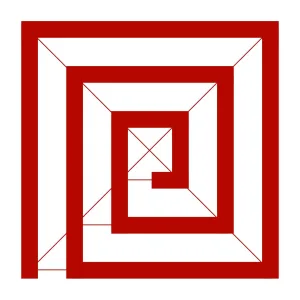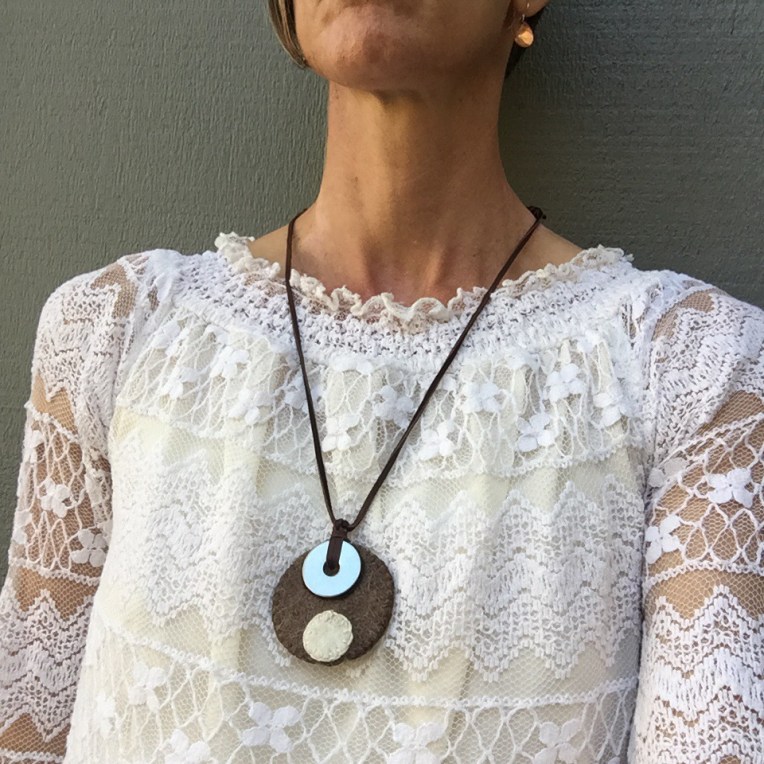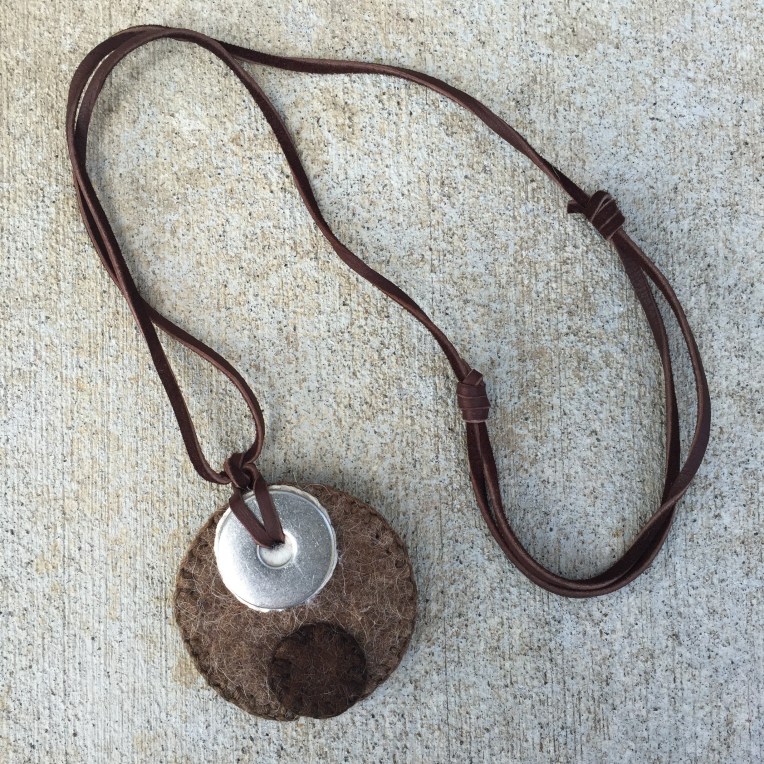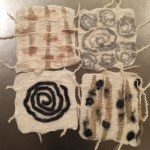Collaboration, like solo creation, usually starts with an idea, vision, or concept, that is then altered as the process unfolds. But unlike solo creation, collaboration affords many more opportunities for unexpected outcomes. When collaborating with young children, I like to set parameters for success by limiting color choices, size, and shape. In this class art project for the school auction, each Pre-K student made a circle-ish piece of flat felt using three colors of alpaca roving donated by Flying Dutchman Alpacas. A dinner plate set the size limit as they laid out the layers of roving in one main color. Two other colors of roving were added in the final layer in whatever design they chose.
After the student’s felt pieces were finished, I spent about a week just exploring different wall hanging ideas. I even worked with the children a second time to create felted wool balls that I thought would be a part of the final piece. My original wall hanging concept just didn’t seem right anymore. Then a conversation with a friend sparked the idea of using leather as a backdrop for the felt.
Although I had never worked with leather before, I was up for the challenge. The leather was generously donated by Maverick Leather, and Warpony Saddlery punch all the holes for stitching, saving me countless hours. Each piece of leather was hand cut in an irregular circle to highlight the raw, organic shape of felt. A hand sewn saddle stitch in artificial sinew creates a contrasting border. Unseen are dozens of holes that I hand punched into each circle of leather so the children could easily hand stitch their felt piece onto the leather using wool yarn and a large eye needle. Their unique, individual stitches add more texture and personality to the wall hanging. Finally, a juniper branch was cleaned and sanded by a friend with all the right power tools.
The culmination was a large, colorful felt and leather wall hanging – a collaborative creation, made with love for the school auction.


















